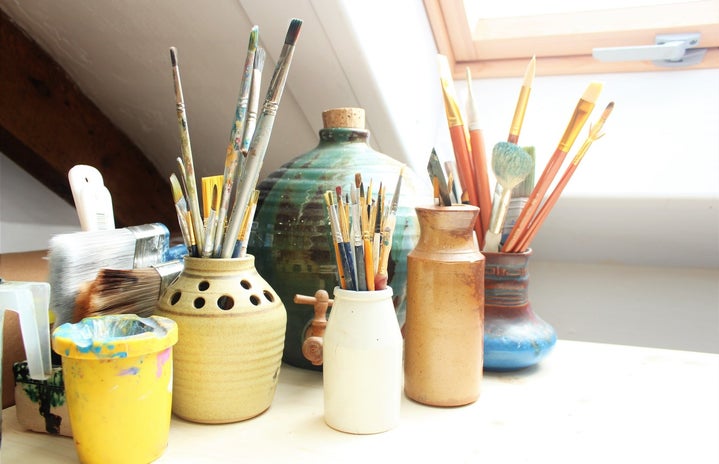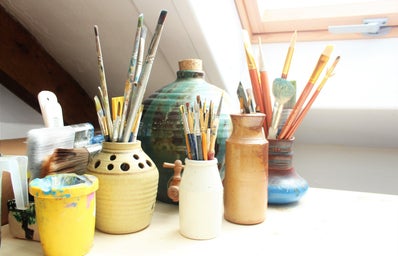Growing up, art has always been a big part of my life in many different forms. With film fanatic parents, a musician uncle, and an art teacher aunt, I had more than enough exposure to a wide range of art and media. This led to me being quite creative myself; I have always adored working in genres ranging from visual art, to music and jewellery and have always had some kind of artsy hobby. One important reason for my art is because they have always helped me cope when I’m struggling. During COVID-19, I found myself turning to paint, beading jewellery, and my favourite movies to keep myself going forward. Participating in these activities, though all of them are different and involve different forms of engagement, genuinely makes me feel good. Over the past two semesters, I have had the opportunity to do research on art therapy and open studio art therapy for my qualitative and quantitative research study classes. What I have learned is that art as therapy is a valuable tool. Research shows that “artmaking in a rehabilitative setting builds confidence, encourages creativity, and contributes to a greater sense of social belonging and wellbeing, as well as an enhanced quality of life” (Finkel and Bat Or, 2019, p. 3). Though I am no expert, I hope to share some of what I have learned about art therapy with you and encourage you to be more creative in your day-to-day life.
Open studio art therapy, in short, is defined as the physical space of an ‘open studio’ in a community where members can go to freely express themselves through art. These open studios are offered on both a regular and rehabilitative basis. These spaces and the healthy relationships built and maintained within them, combined with the therapeutic effects of the art, allow for a space for both the community in general and for vulnerable populations within it to thrive (Timm-Bottos, 2017, p. 95). When I say the words ‘art therapy’ I feel the assumption is that I mean visual art (painting, sketching, etc.) however, art therapy is a wide range of things. Art therapy could encompass dance, music, working with clay, knitting, jewellery making, and colouring mandalas. Art therapy is dynamic and an open studio is even more so, which is one of the best things about it. Open studio art therapy can adapt to you and your needs at that moment in time. The creative process for me is all about expressing how you feel, taking those emotions and energy and putting them into a tangible object. I love to do this through painting and I will often take something I love and pull inspiration from it. I have done this with movies and songs that I love, however, as I mentioned above, there are so many other ways to be creative. For example, my roommate loves to dance whenever she needs to get her energy out. The point is to do what feels right for you, honour your needs and wants, express how you’re feeling in whichever way you want to.
With so many avenues to choose from, if you haven’t created in recent years, it can be hard to know where to start. A good way to create on a budget is to get your tools and materials from the dollar store; they have a lot of good options for sketchbooks, pens/markers/pencils, modelling clay, paint, canvases, and more. For people who possibly feel more comfortable and know the ways they like to be creative, you may want to shop at places like Micheals instead.
In the end, I can’t force you to go out and be creative, however, I can encourage you to engage more with art in your everyday life. Whether that be throwing yourself a dance party in your room, singing along to your favourite songs, creating visual art or clay models, or something like knitting or jewellery making, the positive effects that it could have on your holistic well-being will be well worth the time.
Finkel, D., & Bat Or, M. (2020). The open Studio approach to Art Therapy: A Systematic SCOPING Review. Frontiers in Psychology, 11. doi:10.3389/fpsyg.2020.568042
Timm-Bottos, J. (2017). Public practice art therapy: Enabling spaces across north america (la pratique publique de l’art-thérapie : Des espaces habilitants partout en amérique du nord). Canadian Art Therapy Association Journal, 30(2), 94-99. doi:10.1080/08322473.2017.1385215



